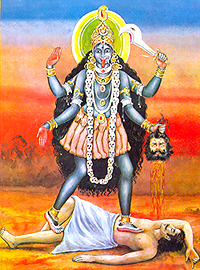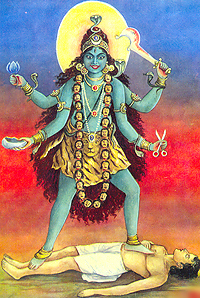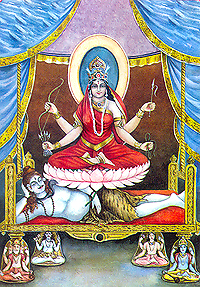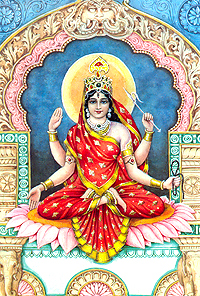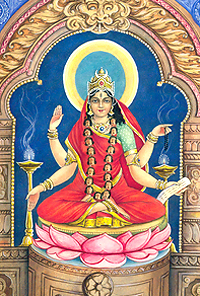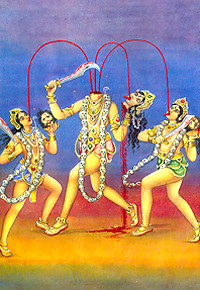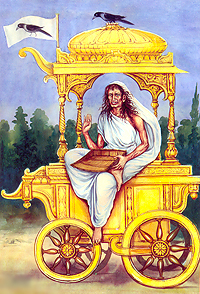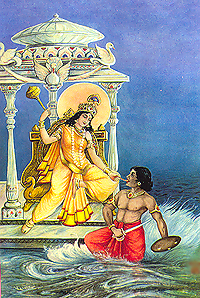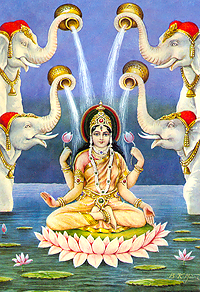KALI
In her most famous pose as Daksinakali, it is said that Kali, becoming drunk on the blood of her victims on the battlefield, dances with destructive frenzy. In her fury she fails to see the body of her husband Shiva who lies among the corpses on the battlefield. Ultimately the cries of Shiva attract Kali's attention, calming her fury. As a sign of her shame at having disrespected her husband in such a fashion, Kali sticks out her tongue.
One South Indian tradition tells of a dance contest between Shiva and Kali. After defeating the two demons Sumbha and Nisumbha, Kali stays in a forest. With fierce companions she terrorizes the surrounding area. One of Shiva's devotees becomes distracted while doing austerities and asks Shiva to rid the forest of the destructive goddess. When Shiva arrives, Kali threatens him, claiming the territory as her own. Shiva challenges her to a dance contest, and defeats her when she is unable to perform the energetic Tandava dance. Although here Kali is defeated, and is forced to control her disruptive habits, we find very few images or other myths depicting her in such manner.
Sri Ramakrishna Paramahansa
Great devotee of Dakshinakali at Dakshineshwar, West Bengal was Sri Ramakrishna Paramahamsa who worshipped her as mother.
In her form as Dakshina Kali, she is the real form of all vidyas (goddesses) who give siddhi (success). Because Shiva and Shakti are one, they must be worshipped together.
